Everest High Passes Trek is the supreme trek for thrill-seekers as well as adventurers in the Everest area. In this trek, you will certainly not just reach the Everest Base Camp however also go through the three highest comes on the Khumbu area– Kongma La Pass (5,535/ 18,159 feet), Cho La Pass (5420m/17,782 feet), and also Renjo La Pass (5,340 m/17,520 ft).
Highlights of Everest High Passes Trek:
- A beautiful flight to Lukla
- Spellbinding sight of hills from the 3 high passes (Kongma La, Cho La & Renjo La).
- Famous Sherpa community in the Everest area – Namche Exposition.
- Nepal’s highest possible flight terminal Syangboche.
- Stunning sights from Gokyo Ri.
- Among the globe’s highest possible hotels – Everest Resort.
- Gokyo Lakes.
- Ancient abbey in Tengboche.
- UNESCO Globe Heritage Sites.
- Prayer wheels, vivid flags, Mani rocks, high suspension bridges.
- The wide variety of plants and also fauna.
- Wildlife like musk deer, vibrant pheasants, snow leopard, and Himalayan Thar.
- Greatest glacier on Earth- Khumbu Glacier (4900m).
- Incredible scenic sight from Kala Patthar (5,555 m).
Everest High Passes Trek Summary:
The Everest High Passes Trekking is just one of one of the most adventurous treks in the world that takes you deep into the Everest region. You reach see what lies around Everest, exactly how the geography boosts to trigger the globe’s highest possible hill.
The trekking is extreme and supplies a much more in-depth image of the harsh terrain, chilly environment, and also continuous human struggle in high altitudes.
It goes without saying that Everest does not increase alone. In fact, numerous high hills lie around the Everest location – consisting of Lhotse (8,516 m), Ama Dablam (6,812 m), Makalu (8,516 m).
Everest Three High Passes Trek occurs in the Sagarmatha National Park region. Sagarmatha National Park covers an area of 1148 sq.
Kilometres. This national park is home to 118 bird types, uncommon creatures like musk deer, snow leopard, red panda, and also Himalayan black bear. The plants of this area is dwarf-sized, and also plants quit growing at elevations over 5,750 m.
Your 17 days Everest High Pass Trek begins with an impressive 45-minute trip from Kathmandu to Lukla (2,840 m).
After the flight, you will be trekking to Phakding (2,610 m), where we will certainly be investing the evening. The adhering to morning, after going across several suspension bridges over the fast-flowing white rivers, we will certainly get to Namche Fair (3,440 m).
Namche Exchange is an ideal area for us to accommodate and contains stores, restaurants, and also web cafes. We will certainly additionally visit neighboring monasteries, the principal among them is Khumjung Monastery. If you wish to see the standard Sherpa negotiation, you can trek for a hr. While acclimatizing at Namche Marketplace, you likewise get an opportunity to obtain the initial glances of Mt. Everest by hiking up to Everest Sight Resort.
After a rest day at Namche, we proceed our 3 High Passes Trip by heading to Thame (3,750 m). This is where our path separates from classic Everest Base Camp Trip, which continues to Tengboche. We follow the Bhote Koshi River to reach Thame. There is a tiny hydroelectric plant that comes before Thame.
We wake up at Thame and also support for another day of trekking towards Lungden (4,500 m). The paths are fairly tough, and also you require to travel for around six hours to get to Lungden, where we will certainly spend our night.
The next day will be exciting as well. We will leave Lungden behind as well as head for the Gokyo Lakes region. Somewhere in between Lungden as well as Gokyo exists Renjo La Pass (54,35 m), the initial among the 3 significant passes we will cross. From Renjo La Pass, you can see fantastic sights of the Gokyo Lake system and numerous Himalayan Optimals – consisting of Everest (8,848 m), Lhotse (8516m), Makalu (8,481 m), Cho Oyu (8,201 m), and also Ama Dablam (6,812 m). We will remain at Gokyo for the evening and spend the adhering to day seasoning.
As we season in Gokyo, we will certainly go to Gokyo Ri (5,483 m) from where you can see four among the six greatest hills worldwide – Everest (8,848 m), Lhotse (8,516 m), Makalu (8,485 m), and Cho Oyu (8,188 m). The scenes from the Gokyo Ri are probably the best in the Everest Area, as well as the sights are mind-blowing.
Next, we will certainly continue our trip from Gokyo to Thagnak (4,700 m), crossing Ngozumpa Glacier on the way. From the routes, in addition to awesome Himalayan terrains, you will also get a chance to see yak fields, or if you are fortunate yaks grazing on them.
The following day’s destination is Dzongla (4,855 m), and heading lies Cho La Pass (5,420 m). You will certainly be going through the Chola Pass, and also it is the second major pass in this trip. This pass connects the Gokyo region and also Everest area as well as serves as an Everest Perspective.
By crossing Cho La Pass, you have entered the Everest Region, and also we will be heading towards Everest Base Camp, yet we need to stop in 2 locations – Lobuche (4,910 m) and also Gorak Shep (5,185 m).
As we move forward from Dzongla to Lobuche, you will get to see the memorial statuaries of vacationers who succumbed to the severe problems in this region.
The l lth day of the trekking is going to be phenomenal; you will wake up at Lobuche (4,930 m) and also head to Gorak Shep (5,185 m).
You will certainly need to walk for regarding eight hrs to reach Gorak Shep, where you will certainly leave your personal belongings as well as reach Everest Base Camp (5,364 m). It is a huge achievement. In spite of the harsh surface, high altitude, as well as tough environment, you was successful within the Everest Base Camp. We do value your effort and decision.
After spending time on EBC, we will come down to Gorak Shep as well as spend the night there. The following morning we will certainly awaken at Gorak Shep as well as trip to Kala Patthar (5,555 m), from where we can catch the heavenly view of dawn splitting on Mt. Everest. We will certainly take in the unbelievable landscapes as well as get back to Gorak Shep as well as descend to Lobuche to invest the night.
The adhering to early morning we will get up at Lobuche as well as head to Chhukung (4,730 m), as well as in between lies Kongma La Pass (5,535 m) – the last of our three major passes. It is likewise the highest possible pass amongst the 3 passes and also is difficult but bear in mind that the even more testing an trekking is – the even more incentives you will be enjoying. We will certainly be spending the night at Chhukung for that day.
On our fourteenth day, we leave Chhukung behind and head to Tengboche (3,855 m) as well as pass Dingboche and Pangboche heading. From the trails, you get to see grown lands, surrounded by rocks, to make sure that the crops are secure from cool winds and wild animals. The path allows you to see a few of the amazing scenes of Amadablam (6856m), Everest (8848 m), Nuptse (7861m), and also Lhotse (8501m). We will not forget to see the well-known Tengboche monastery too.
Our trip is concerning an end, and the next day’s trek will certainly take us back to Namche Exchange. The way is uneven and goes through thick forest, as well as if you are lucky, you will obtain a possibility to see Himalayan pheasants, musk deer, mountain goats, and even snow leopards. We will certainly be investing our evening at Namche Bazaar.
On the last day of Everest 3 High Passes trekking trails, we will certainly be heading from Namche to Lukla. We return down to Dudh Koshi Valley, cross Hillary Suspension Bridge, and hiking for around 7 hrs to get to Lukla. We will be remaining in Lukla for the evening. Your Everest 3 High Passes trekking in the Everest region is virtually over, and you are just a night away from returning to Kathmandu.
On your seventeenth day, in the early morning, you will board an airplane back to Kathmandu. You will have left the Everest area behind with fresh memories, new experiences, and probably a brand-new mindset.
Day1: Flight from Kathmandu (1,400 m/ 4,593 ft) to Lukla (2,850 m/ 9,350 ft) Trek to Phakding (2650m/ 8562ft).
Our Everest 3 Passes Trip begins with a 40-minute residential flight from Tribhuvan International Airport to Lukla. This breathtaking flight provides you with fantastic sights of Langtang as well as the Annapurna Himalayan variety.
In the beginning, we will certainly get down from Lukla to the Thado Koshi River as well as go across a couple of suspension bridges before reaching Phakding. The trek will be short and enjoyable as we will certainly likewise be seasoning. In Phakding, we will certainly not miss our possibility to go to Rimishung Monastery.
Day2: Trek from Phakding (2,650 m/ 8,562 feet) to Namche Fete (3,440 m/ 11,285 ft).
We will certainly begin early in the early morning at Phakding as well as relocate north along the financial institutions of Dudh Koshi River, passing lots of suspension bridges -including Hillary Suspension Bridge.
Our course also takes us with Monjo Town, deep forests, as well as rough trails to Sagarmatha National Park Check Post, where we will register our permits as well as climb right into the forest. From this woodland, you will certainly see Mt. Everest for the first time. However, we will proceed the trek up until we get to Namche Fair – the location for the day.
Day3: Rest Day to season at Namche Exposition.
Today will be an acclimatization day at Namche. We advise you to explore Namche Marketplace. This community includes numerous Wi-Fi-linked coffee shops, dining establishments, souvenirs, and gear shops. There are other choices – check out the Sagarmatha National Forest site visitor facility, conventional Sherpa settlements, Hillary College, Khumjung monastery, Dingboche Airport, and also Everest Resort.
Day4: Trek from Namche Marketplace (3,440 m/ 11,285 ft) to Thame (3750m/ 12,303 feet).
We leave Namche Bazaar as well as head to Thame complying with Bhote Koshi as well as past the want and rhododendron woodlands. En route, you will certainly likewise reach see the mud-plastered stupa at Phurte. As you move ahead you will come to Thamo as well as Thamo Gompa, and also from here the path drops outstanding to Khumbu Hydroelectric Plant, eventually leading to the Thame, which lies at the end of Khumbu Valley.
Thame is residence to lots of popular Sherpa mountaineers, including Apa Sherpa, who holds the globe record for summiting Everest 21 times. It is also a childhood years home of Tenzing Norgay Sherpa, one of the initial males to climb Mt Everest. The other person is Edmund Hillary.
Day5: Trek from Thame (3,750 m/ 12,303 ft) to Lungden (4,500 m/ 14,764 ft).
This particular day you will certainly be walking around the towns while delighting in the views of the landscape, plant life, as well as hills. Throughout gleaming early mornings light-painted rocks, lichens, yaks, and snow-capped heights look surreally vivid. The last village in the valley is Taranga, yet we proceed the hike with Marulung (4200m) town as well as ultimately to Lungden, the location for this particular day. In our extra time, we can check out Nakpa Valley that made use of to be the old trade route to Tibet. In addition, we can trek to Cho Relmo Lake as well.
Day6: Trek from Lungden (4,500 m/ 14,764 feet) to Gokyo Lake (4,750 m/ 15,583 feet) by means of Renjola Pass (5,446 m/ 17,867 feet)).
It will be one of one of the most exciting days for you as you will certainly be walking through the initial come on the route – Renjola Pass. We leave Lungden behind to continue our trip onward to the Gokyo Lakes area, depending on the season, you will have the ability to observe different human activities like yak herding.
Once you get to the Renjo La Pass, you will be able to see the magnificent views of high peaks like Mt. Everest (8848 m), Mt. Lhotse (8516m), Mt. Makalu (8463m), as well as Mt. Cho Oyu (8201m). You will certainly additionally see the third major Gokyo Lake (among 5) – Dudh Pokhari, and the Gokyo village lies alongside this lake. The course after that descends and also allows you get in the Gokyo Valley, yet you need to be careful since the route might be icy.
Day7: Day of rest to season at Gokyo. Early morning at Gokyo Ri (5,400 m/ 17,814 feet) Point of view.
Acclimatization offers us time to climb the Gokyo Ri Perspective from where you can see the exciting views of the Everest area – including Thonak Tsho Lake and also the Ngozuma Tsho Lake.
3 kilometers north of Gokyo exists Ngozumpa Tsho glacier (5,000 m), as well as within five minutes stroll lies Creep’s Perspective. From here, you get superb sights of Cho Oyu, Everest, Lhotse, Nuptse, and Makalu.
On the north of the 5th Gokyo Lake, you can see unbelievable views of the Cho Oyu Base Camp and also the Ngozumpa Glacier – the lengthiest glacier in the Mountain ranges.
Day8: Trek from Gokyo (4,790 m/ 15,584 feet) to Thangnak (4,700 m/ 15,400 ft).
We will certainly be back on our trip on this particular day, strolling past the Ngozumpa Glacier, however the route is rocky and goes through a number of ups as well as downs. We will certainly be strolling down the valley on the eastern glacial moraine as the landscapes becomes magnificent and also inspiring for you to move forward. Ultimately, we get to the collection of lodges known as Thangnak. This place depends on a tranquil setup optimally positioned for Cho-La high pass crossing.
Day9: Trek from Thangnak (4,700 m/ 15,400 ft) to Dzongla (4,855 m/ 15,930 feet) via Cho La Pass (5420m/ 17,783 feet).
There are some more difficult trek to cover today as we will be travelling on rocky routes as well as the glacial moraines – eventually reaching Dzongla. However, the amazing part is – you will be crossing Cho La Pass (5420m/ 17,783 ft) that attaches Dzongla and Thagnak. This pass supplies spectacular sights of Everest and also the other Mountain range. After appreciating the views from there, you will certainly be descending to Dzongla for the evening.
Day10: Trip from Dzongla (4,855 m/ 15,930 ft) to Lobuche (4,910 m/ 16,175 feet).
After investing the evening at Dzongla, we will wake up the following day as well as proceed our trip. Today’s destination will certainly be Lobuche. At Lobuche, we will rejoin the timeless Everest Base Camp Trek. Yet initially, we begin the day by complying with the moraine as well as descending together with Chola Lake. As we continue, we will be seeing memorial statues of the mountain climbers that passed away in this area. The walk to Lobuche need to be extremely enjoyable. We will certainly just adhere to the routes of Imja Khola Valley to reach Lobuche.
Day11: Trek from Lobuche (4,930 m/ 16,175 feet) to Everest Base Camp and back (5,364 m/ 17,598 feet) to Gorak Shep (5,185 m/ 17,010 feet).
Ultimately, on your eleventh day, you will reach Everest Base Camp. The trek begins by trekking through the lateral moraine of Khumbu Glacier up until we reach Gorak Shep.
We will certainly leave our belongings at Gorak Shep and also climb north to Everest Base Camp. The camp itself forms the base for mountaineers rising or coming down the Everest Mountain.
Reaching Everest Base Camp (EBC) is difficult, and by reaching EBC, you have actually shown how determined you are. In a way, it is a triumph over on your own -a victory of determination, a favorable attitude, and perseverance. We will certainly remain on EBC for some time taking in the wonderful views that only a few on earth ever will. After clicking several photos, we will come down to Gorak Shep, where we will certainly remain for the evening.
Day12: Hike to Kala Patthar Point of view (5,555 m/ 18,208 feet), trek to Lobuche (4,910 m/ 16,175 feet).
You were at Everest Base Camp the previous day, however despite reaching EBC, you could not truly see Mt. Everest. So today supplies you the possibility to see Mt. Everest up-close and also in all splendor.
To catch the dawn breaking at Everest, we get up early in the morning and walking to Kala Patthar (5,555 m) – the renowned Everest Sight Factor. We will certainly remain at Kala Patthar for a long time, appreciate the sunup over Mt. Everest and then come down to Gorak Shep for morning meal. After having morning meal, we will certainly hike back to Lobuche, the destination for this day.
Day13: Trek from Lobuche (4,930 m/ 16,175 feet) to Chhukung (4,730 m/ 15,580 ft) through Kongma La Pass (5,535 m/ 18,159 ft).
Today, you will certainly be crossing the last among the 3 passes that lie on your trail. This pass is thought about one of the most challenging among these 3 passes. The trek begins with Lobuche. The ascend to Kongma La Pass is easy with the path populated with frozen lakes, and a mummy-wrapped crane marks this pass. From the pass, you can see Lhotse, Lhotse Shar, Makalu, Baruntse, and also Ana Dablam.
We come down from the Kongma La pass to the eastern side of Nigyang Khola Valley as well as right into the Chukhung Village. Sherpas use this location as a yak field, but there is no long-term habitation. Just recently, this region has gained popularity as a trekking optimal, and the travelers often utilize Chhukhung for acclimatization objectives.
Day14: Trek from Chhukung (4,730 m/ 15,580 feet) to Tengboche (3,855 m/ 12,850 ft).
We descend the Imja Khola valley, hike with the village of Dingboche, renowned for its stone-walled potatoes areas, towering fields, and also continue ahead. On the way, you will additionally see Kharkas (highland sheds) at Tsura, Orsho, and also Shomare.
As we proceed our hike, we will certainly reach Pangboche Village – the area for year-round settlement in the valley, and after that to Tengboche. From the Tengboche point of view, you can see breathtaking views of unique tops like Amadablam (6856m), Everest (8848 m), Nuptse (7861m), Lhotse (8501m). We will likewise be visiting Tengboche Gompa – the earliest monastery in the Khumbu area.
Day15: Trek from Tengboche (3,855 m/ 12,850 feet) to Namche Bazaar (3,440 m/ 11,285 feet).
The path to Namche Exchange takes us with woodlands occupied by highland wildlife like pheasants, musk deer, mountain goats, or perhaps snow leopards. We will be getting on the high slopes around which lie chortens and petition flags. From the course, you can enjoy the view of the tip of Everest and the behind of Lhotse.
Day16: Trek from Namche Fair (3,440 m/ 11,285 feet) to Lukla (2,850 m/ 9,350 feet).
Our last day of trekking will certainly lead us back to Lukla. After morning meal, we will certainly be treking down a steep path that descends to the Hillary Suspension Bridge. Nonetheless, we proceed walking through numerous neighborhood towns in the Dudh Koshi River Valley till we reach Lukla. It is your sixteenth day of hiking, as well as your walking is practically over. We wish you appreciated the whole trekking extensively.
Day17: Fly back to Kathmandu (1,400 m/ 4,593 feet) from Lukla (2,850 m/ 9,350 feet).
If everything goes according to the timetable, we will certainly be flying back to Kathmandu in the early morning on our 7th day of the trek. Your 40-minute flight back to Kathmandu will certainly undoubtedly be a kicking back one, and also you most likely will be recalling at the time invested during the trek.
What is included?
- Airport transfer by Hiking Nepal office representative in a private vehicle
- 3 nights’ accommodation at Tourist Standard Hotel in Kathmandu with breakfast on twin sharing basis
- Accommodation at well and comfortable Mountain Lodge available en-route during the trek (Few nights at during trek with attached bathroom/toilets)
- English speaking, First Aid and Eco-trained local trekking guide, Assistance guide as per the group size, porters (2:1)
- All the expenses for guide and porters along with Insurance
- Domestic Airfare for Kathmandu/Lukla/Kathmandu
- Sagarmatha National Park Fees
- Exclusive medical kit bag, Duffle Bag, Trekking T-shirt, Adventure Certificate
- Sleeping Bag and Down Jacket during Trek- need to return back after trek
- All government and local taxes as applicable
What is not included?
- Nepal Visa – (Cost- US$- 30 for 15 days & $- 50 for 30 days)
- Lunch & evening meals while in Kathmandu (Except welcome/farewell dinner)
- Travel insurance
- Cost of personal nature expenses, Beverages (Mineral water or coca-cola), cost of extra meals, snacks, phones bills, Internet, WiFi, laundry etc.
- The cost incurred during emergencies, evacuations
- Tips for Guide, porters, driver …
Group Size:
For group, we normally run with minimum 2 person to maximum 10 in our published group departure program. However, there is no barrier for a private trip. We can run a trip for single person and even more than 10 in a group. Normally for a group, we provide 1 main guide, 1 assistance guide along with 1 porter for every 2 trekkers. Moreover, for every additional 2 trekkers, 1 more assistance and a porter will be provided making a team combination as follows:
Minimum to 2 PAX: 1 Guide and 1 porter
4-6 PAX: 1 guide, 1 assistance guide and 3 porter
7-10 PAX: 1 guide, 2 assistance guide and 4/5 Porter
Guide and Trip Safety
Once, you confirm your trip, it is our responsibility to make your trip wonderful without creating any difficulties. Hence, we have prepared our itinerary in such a way that it will properly acclimatize you. Also, we request you in advance to have regular exercises and make habits to walk in a daily basis. Similarly, during trek, you will be fully guided by our professional trekking guides and supporting team. They are properly trained in regards to safety and first aid. Even, we have every set up in case of emergency such as high altitude medicine and Gammow Bag (High altitude Chamber bag). Please note High altitude Chamber Bag is used to provide heat in your body and it is available on certain cost. Moreover, to let you familiar with altitude, you are suggested to walk slow and steady and ensure for proper acclimatization.
For trekking, we provide local experienced guide speaking fluent English and familiar with the local routes, landscape, flora, fauna as well as culture, and tradition of certain areas and let you feel comfortable. We do not encourage for child labor, hence, our porter will be above 16 years that are living in the Himalayas of Nepal; as well as carries only 20-22 kg weight per porter. Normally, the guide and support teams are selected with proper analyzing of their experience, leadership skills and personal aptitude. Our guides are well familiar with different societies of all caste and customs along the trail and share the insight culture with you that are not even noted in guide book.
To make our staffs more fluent and experienced, we consistently provide trainings. They have been participating in special training programs like Trekking guide training, Rock climbing, Ice climbing, Intensive Wilderness first Aid and many more that has been certified and approved by Nepal Government.
Travel Insurance
While travelling to Nepal, you are requested to have a travel insurance that should cover any comprehensive expenses possible to acquire due to medical issues or accidents. Especially, your travel insurance must protect air ambulance, treatment charges, rescue and evacuation, product cancellation and refundable charges, flight delay and cancellations. We suggest you to bring you travel insurance certificate or send us scan copy and required to issue from your home land and we do not arrange or sell insurance.
Travelling in the Himalayas is full of adventurous; hence it is wise to choose a proper insurance policy. While choosing your insurance policy, make sure that it will protect all such unforeseen expenses. Your insurer should be well familiar with our itinerary that you have booked and must have agreed to cover all activities being undertaken during trip. Meantime, it is not compulsory that our all the assigned trip are facilities with Heli-rescue. You will not require heli rescue insurance for Tibet Tour as it is not possible to provide such facility.
Vaccination
It is better to follow the precaution given by World Health Organization and other international health related institutions that recommend having vaccines before travelling Nepal to prevent from certain fatal illness. If possible, we suggest you to bring your medical certificate however, it is not required to show but for safety. The recommended vaccines are polio, Diphtheria, Tetanus, typhoid, yellow fever, hepatitis A/B, Influenza (Flu), Japanese encephalitis, and Tuberculosis. Meantime, it is better to consult your professional doctor about your travel and he might recommend you properly. You can also take suggestion of local travelers who have travelled Nepal before and know more about the required precautions. Please note that the protection that can be gained from vaccines varies from 50% to almost 100%. So remember that even if you have taken a vaccine you might still get the disease, although you will have greatly reduced your chances of getting ill.
High Altitude Sickness
At the higher altitude, you will feel a decrease in availability of oxygen. If a person walk in the high altitude particularly climbs up too quickly, he might suffer from High altitude sickness. Hence, proper rest is required at that altitude. You can cure at right time knowing certain symptoms of Altitude Sickness. Common symptoms are headache, loss of appetite, tiredness and nausea, vomiting, dizziness and difficulty in sleeping. The best remedies that local belief and take is taking garlic, or ginger in mouth. Eat dry food and take liquid as much as possible. We recommend Diamox if there is no any options.
Also, we provide experienced guide and staffs in dealing with the effects of higher altitudes. As they are natives of Nepal, they easily acclimatize and therefore can care for their clients. They are equipped with necessary medical supplies and will assist with basic first aid treatment. We design our tours to ensure clients are ready for high altitude, and arrange alternative itineraries for those at risk.

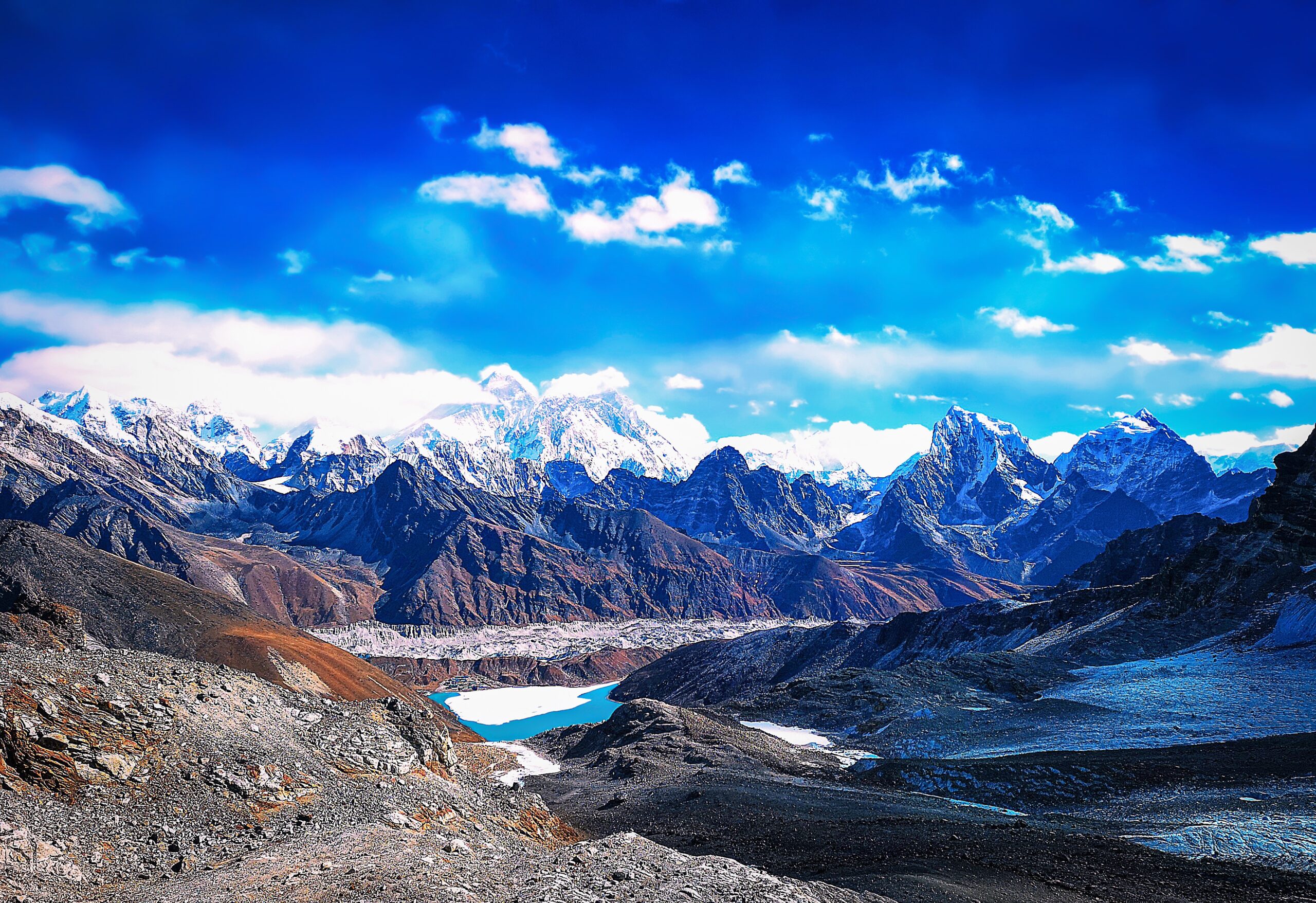
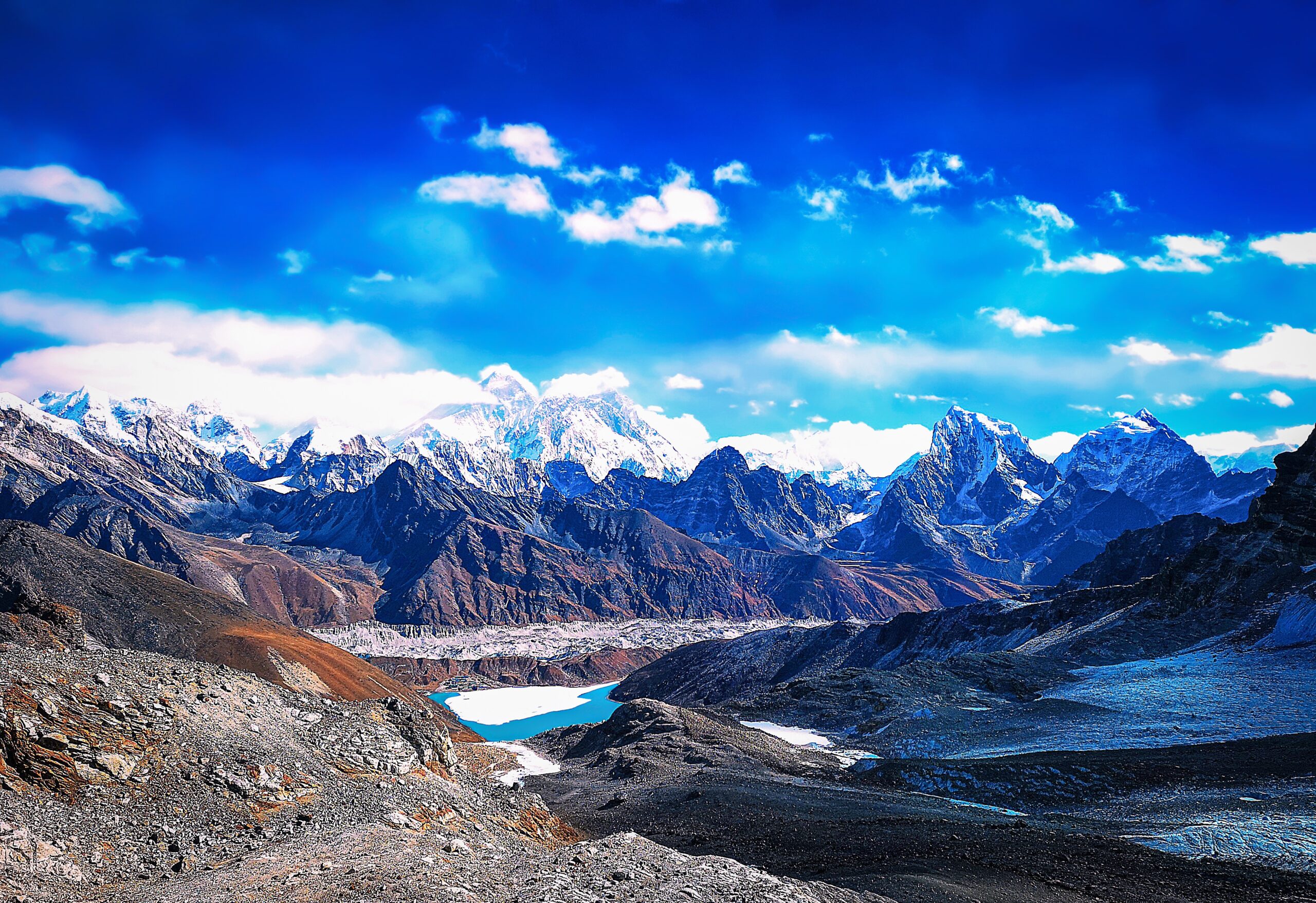

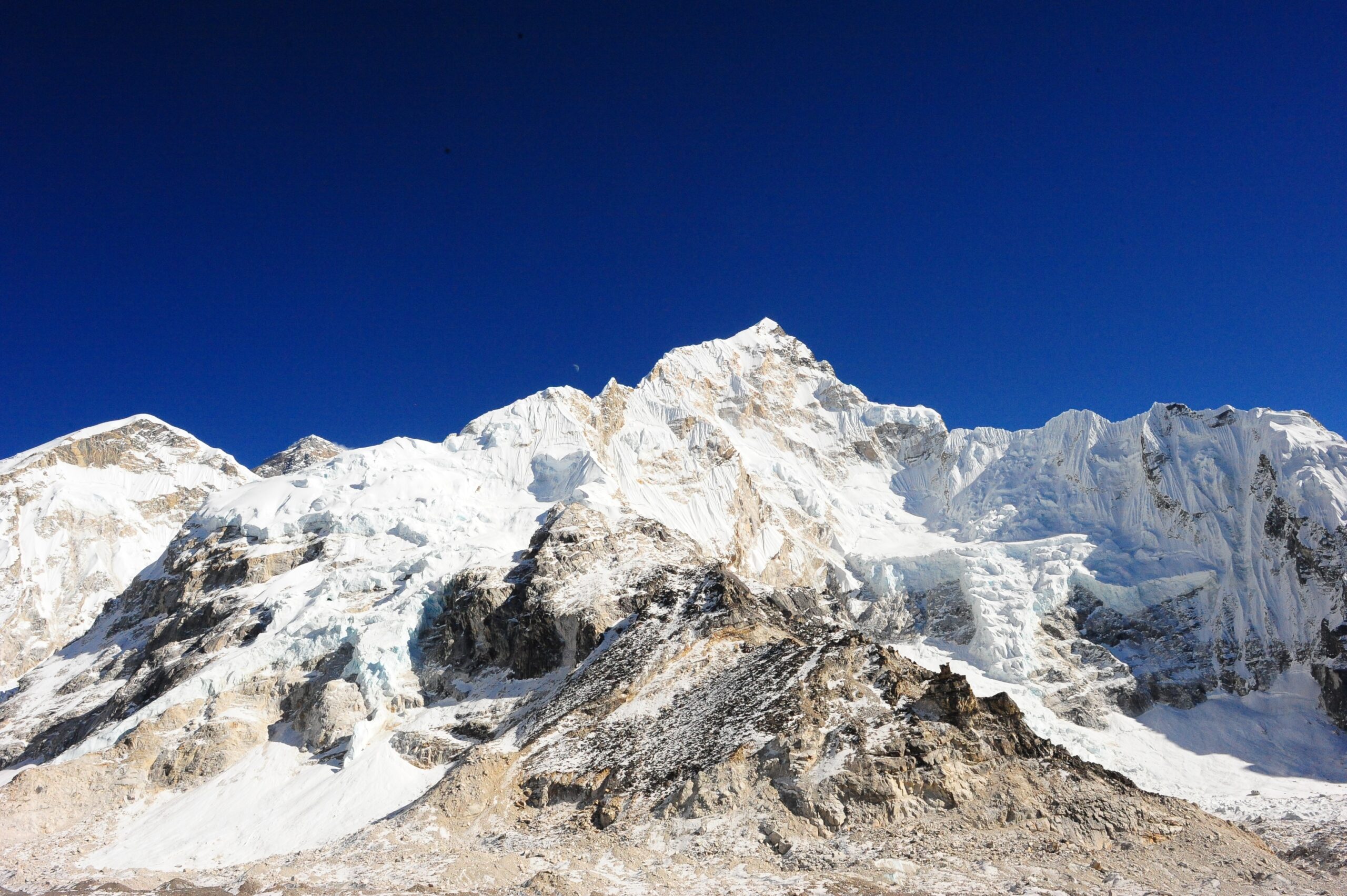
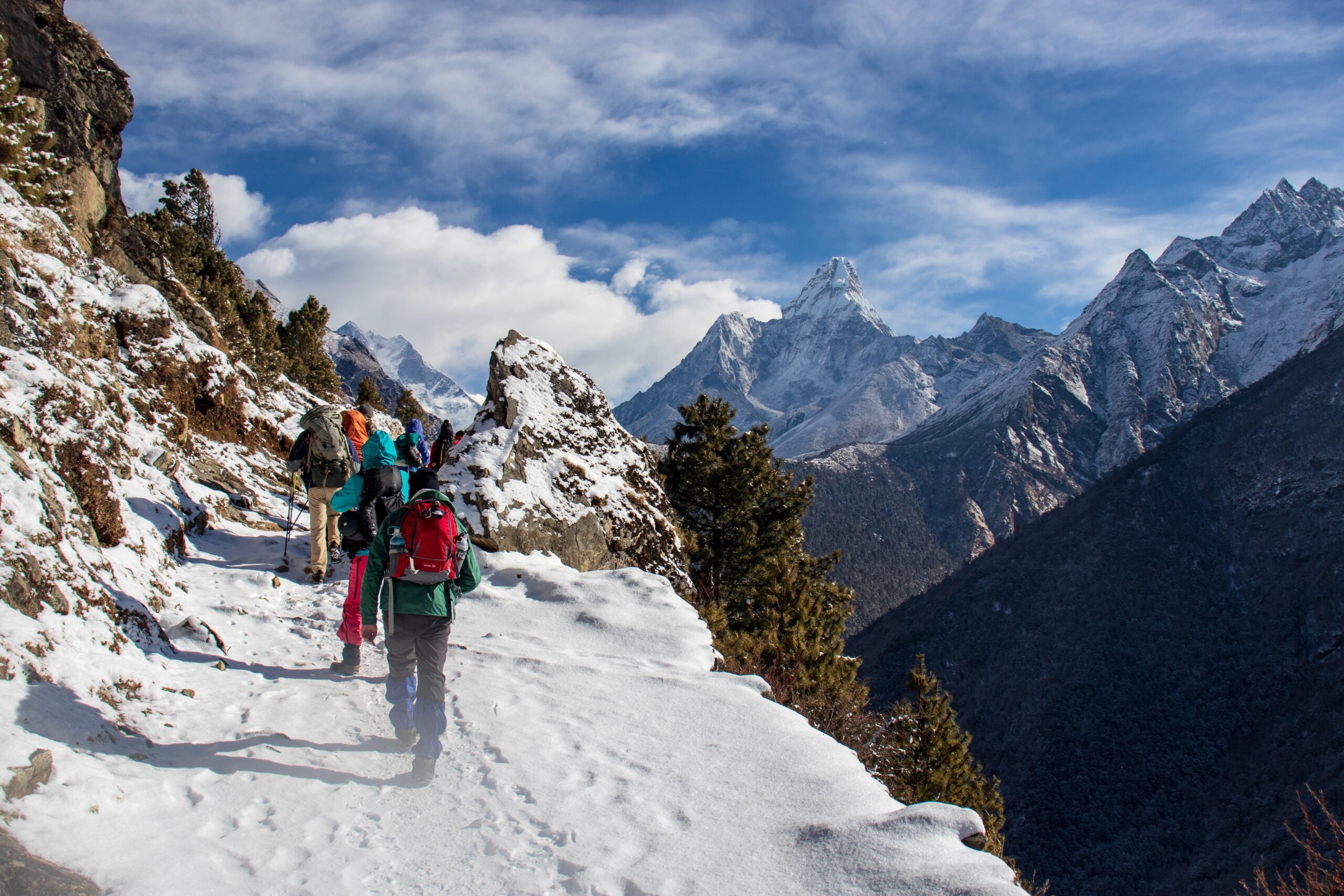
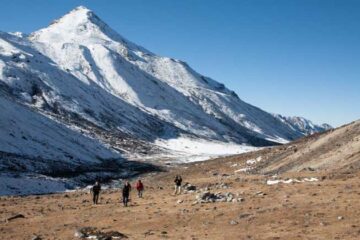
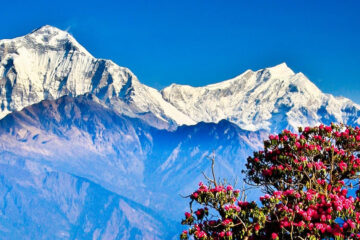

Tour Reviews
I did high pass trekking with my guide. Scenery of this trekking were awesome.I loved this ultimate challenging trekking.Thank you very much for organize Himal Tourism.
Awesome challenging trekking in threes pass we did it . Thank you for providing experience guide and assistant. Really appreciated.
I recently completed the EBC High Passes trek, and it was an unforgettable adventure. The trek was challenging yet incredibly rewarding, taking us through three high passes: Kongma La, Cho La, and Renjo La. Each pass offered spectacular panoramic views of the Himalayas, including Everest, Lhotse, Makalu, and Cho Oyu.
The organizers did an outstanding job. The itinerary was well-planned, balancing strenuous days with acclimatization periods to ensure our safety. The guides were experienced, knowledgeable, and supportive, providing valuable insights into the local culture and geography. The accommodations and meals were excellent, considering the remote locations.
This trek was a true test of endurance and spirit, but the breathtaking landscapes and sense of achievement made it all worthwhile. Thanks to the meticulous planning and support from the organizing team, it was a seamless and memorable journey. I highly recommend the EBC High Passes trek for experienced trekkers looking for a challenging and scenic adventure in the Himalayas.
The Everest Base Camp (EBC) High Pass trek organized by Himal Tourism was an exhilarating and unforgettable adventure that pushed the boundaries of exploration and challenged us both physically and mentally.
The trekking route took us through some of the most breathtaking landscapes on Earth, with towering peaks, rugged terrain, and pristine glaciers at every turn. The high passes, including Cho La, Renjo La, and Kongma La, offered unparalleled panoramic views of the surrounding Himalayan giants, including Mount Everest itself.
The team at Himal Tourism played a crucial role in ensuring the success of the trek. From the knowledgeable and experienced guides who led us safely through the challenging terrain to the support staff who provided assistance and encouragement every step of the way, everyone went above and beyond to make the journey unforgettable.
The accommodations and meals provided along the trek were excellent, offering a warm and comfortable refuge after long days of trekking. The hospitality of the local tea houses and guesthouses added to the overall experience, making us feel welcome and well cared for.
Reaching Everest Base Camp and standing in the shadow of the world’s highest peak was a truly humbling and awe-inspiring moment that will stay with me forever. The sense of accomplishment and camaraderie among fellow trekkers made it all the more special.
Overall, the Everest Base Camp High Pass trek organized by Himal Tourism was an incredible adventure that I will cherish for a lifetime. Many thanks to the entire team for their professionalism, dedication, and hospitality.
I recently completed the Everest Base Camp Three Passes Trek, and it was an extraordinary experience, all thanks to the impeccable organization by Himal Tourism
The entire journey was flawlessly planned, from the warm welcome in Kathmandu to the challenging yet rewarding trek across Kongma La, Cho La, and Renjo La. The stunning views of Everest and surrounding peaks were breathtaking.
Our guide, Santosh was exceptional knowledgeable, supportive, and attentive to our safety. The accommodations were comfortable, and the porters were fantastic, handling everything with care.
Thank you, Himal Tourism for an unforgettable adventure. I highly recommend this trek to anyone seeking a remarkable challenge.
The Everest Base Camp High Pass trek was an exhilarating and challenging adventure through the heart of the Himalayas. Crossing high mountain passes, including Cho La and Renjo La, offered stunning panoramic views that took our breath away. The journey through remote valleys and Sherpa villages provided a deep cultural immersion. While the trek demanded physical endurance, the sense of accomplishment upon reaching Everest Base Camp amidst towering peaks was truly unmatched. A must-do for seasoned trekkers seeking a thrilling and unforgettable Himalayan experience.
Leave a Review